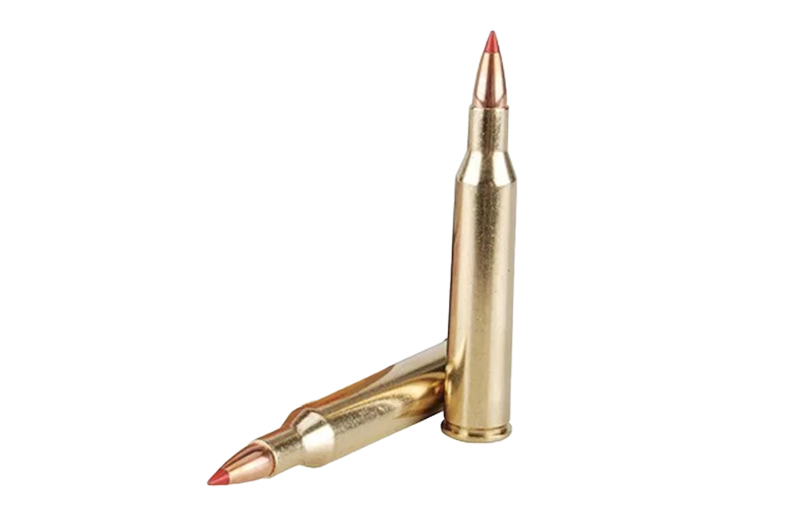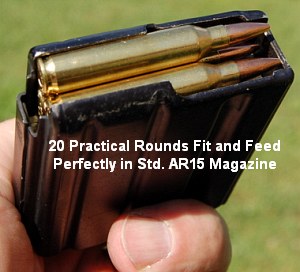.220 Swift cartridges were once the fastest factory loaded cartridges on the market. This once-proud speed demon is now forgotten and unloved among the modern shooting community. Are modern shooters ignoring a true gem? A powerhouse for prairie dog and paper punching? Is it better to let this relic go, now that its time has passed and it can take its rightful place in the ashes of history? From left to right,.220 Swift (top),.222 Remington (bottom),.223 Remington (5th) and 5.56 NATO. Photo: Wikipedia. The.220 Swift cartridge was developed by Grosvenor WOTKYNS, who was experimenting in the early to mid-1930s with necking down cartridges to.224 to achieve higher velocity. The load he developed, along with J.E. Gebby and J.B. Smith necked down a.250-3000 Savage casing to.224. These gentlemen created a variety of wildcat loads using this concept. Wotkyns, however, developed a.22 Wotkyns original Swift that gained some attention as a possible light-skinned varmint round. Remington and Winchester, both ammunition and gun companies, noticed and decided to put their own spins on it. Remington chose to keep the.250-3000 Savage case as its parent and renamed their new cartridge.22250 Remington. Winchester changed the case from the.250-3000 Savage cartridge to the 6mm Lee Navy because it was the main supplier of brass to the U.S. Government and had plenty on hand. Winchester named this new cartridge “.220 Swift”. The original factory load was first offered in 1935 for the Model 54 rifle and featured a 48-grain round at 4,100 feet per seconds out of a barrel measuring 26 inches. The first two decades of.220 Swift were its peak years. It quickly (ha!) gained a reputation for excellent accuracy, wicked efficacy on varmints at long range and some potential as a smaller game round. It quickly (ha!) gained a reputation as an excellent round with great accuracy and effectiveness at long distances. It also has some potential for smaller game. Jack O’Connor was a fan of the.220 Swift as one his Model 70 rifles were chambered for this cartridge. Jack O’Connor and one of his Model 70 Rifles. Ackley was a fanatic of the.220 Swift. He created a 50-grain game hunting projectile as well as.220 Ackley improved. It was his favorite cartridge to use for deer hunting. Lester Womack was a park ranger, gunsmith and culled wild Burros using Ackely 50-grain Bullets. He found that the.220 Swift was a better tool than the.30-06 or other full-power cartridges at the time. “Karamojo”, the famous ivory hunter and gunsmith, loved the.220 Swift. He used it to hunt red deer on his estate in Scotland. Not everyone was a fan. The.220 Swift quickly wore down barrels on most rifles. However, advances in materials would mitigate throat erosion in a significant way later. While those who hunted with it loved it, the reality is harsh and most people don’t have Karamojo-level marksmanship. O’Connor noted that “much big game has been killed with it and killed very, very dead but much big was lost.” Robert Ruark was at one time one of the foremost authorities in hunting and hunting rifles. He had little love for the.220 Swift, which influenced him to advocate “using enough gun” (larger cartridges) and “using too much gun”. The rifle experts of the time recognized its strengths, but also its limitations. On paper, this cartridge is a great light game cartridge at moderate ranges. However, its true strength lies in varmints. It would make an excellent coyote killer. Here’s a table of trajectory from ShootersCalculator. It assumes a 100-yard-zero, 1.5-inch-bore offset, 10 mph crosswind at 90-degrees, and zero corrections for the atmosphere. This was calculated with the Federal Varmint Nosler Ballistic tip load of 40 grains: While a G1 coefficient of 0.221 may not be impressive, the trajectory is. Its starting velocity is 4,250 feet per seconds, and it doesn’t drop below the sound barrier until 825 yards. It still has more energy at 500 yards than some 9mm loads. As you can see, the wind will push it around early and often. The.220 Swift excels when paired with a scope that has enough reticle for accurate placement of shots. Unfortunately, there is no factory load that can improve the above table by more than incrementally. While other calibers are able to improve their performance under high-wind conditions with heavy-for-caliber high-BC ammunition there is no such factory option for.220 Swift. The heaviest factory ammunition available currently features 55-grain bullets. Handloads are the only way to increase weight, and this would require a custom-made rifle with a high enough twist rate. It’s possible, and the results are impressive on paper, however, it is probably not worth the effort given the other options available today. For example, the.22250 Remington can perform 95 percent of the same tasks as the.220 Swift, while being more affordable, easier to find, and putting less strain on barrels. Here’s a chart comparing the.40-grain Nosler.220 Swift load to the.22250 Remington loaded the same Nosler. MidwayUSA lists only five ammo loads. None of them are available as of the date of this article. AmmoSeek has a few, but the selection is slim unless you are willing to handload. It’s not cheap, but not outrageously expensive when you find it. Expect to pay $30-$50 per box of 20 which is not outrageous but also not cheap. The.220 Swift is not only great for long-range varmint hunting and coyote management, but it would also be a great youth hunting rifle with moderate ranges. It is a rifle for experts, given the high level of marksmanship required for game shooting. .243 Winchester and 7mm-08 are also excellent cartridges for prairie dogs, as they are more forgiving. A Remington 700 SF chambered in.220 Swift. While.220 Swift guns can be found second-hand, new production guns are virtually nonexistent. Remington may still have a 700-caliber variant chambered in.220 Swift, as some are available online, but the rifle is not listed on their website. Swift.220 is dead or dying. There are alternatives to every use-case that are just as good, or better, in the real world. Prairie dogs and coyotes can’t tell a difference between bullets traveling at 3,600 fps or 4,000 fps. It’s not that there was anything wrong with the.220 Swift cartridge, but it isn’t good enough to justify its use in place of a more modern and available cartridge. You can still use a.220 Swift to drop varmints, just like you could write a letter on a typewriter. But in an age of.22-250s and personal computers, there is no good reason to do so. Raise Your Ammo Intelligence:NEXT: Download Your Free Storm Tactical Printable Target Pack62 Printable MOA targets with DOT drills – Handgun Range in YARDSThis impressive pack from our friends Storm Tactical includes 62 printable targets 62 printable MOA 62 Printable 62 Printable 62 Printable 62 Printable 62 Printable 62 Printable 62 Printable 62 Printable 62 Printable 62 Printable 62 MOA 62 Printable 62 Printable 62 Printable 62 Printable 62 Printable 62 Printable 62 Printable 62 Printable 62 Printable. The target grids and bullseyes are measured in MOA. Subscribe to the Gun Digest newsletter and we will send you your print-at home target pack immediately. Enter your email below.

Gun Media at NRA Annual Meetings in GA — Live Broadcasts
April 21st, 2025The 2025 NRA Annual Meetings & Displays may have Tones of the Second Amendment. Popular internet visitors and listeners will transmit from a prominent “Radio Row ” at
















